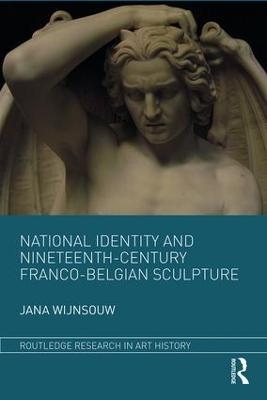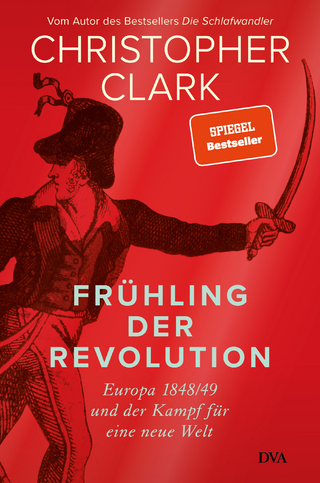
National Identity and Nineteenth-Century Franco-Belgian Sculpture
Routledge (Verlag)
978-1-138-71251-5 (ISBN)
This book elaborates on the social and cultural phenomenon of national schools during the nineteenth century, via the less studied field of sculpture and using Belgium as a case study. The role, importance of, and emphasis on certain aspects of national identity evolved throughout the century, while a diverse array of criteria were indicated by commissioners, art critics, or artists that supposedly constituted a "national sculpture." By confronting the role and impact of the four most crucial actors within the artistic field (politics, education, exhibitions, public commissions) with a linear timeframe, this book offers a chronological as well as a thematic approach. Artists covered include Guillaume Geefs, Eugène Simonis, Charles Van der Stappen, Julien Dillens, Paul Devigne, Constantin Meunier, and George Minne.
Jana Wijnsouw holds a PhD from the Department of Art History, Music, and Theatre Studies at Ghent University.
List of Tables List of Figures List of Abbreviations Acknowledgments Introduction PART I 1830–1850: Belgium’s ‘Big Bang’ and the Emergence of Its Sculpture School 1 Politics 1.1 Sculpture for a New Country: Art as a Unifier 2 Education 2.1 Defying ‘Enemies of Our True Nationality’: The Academy of Antwerp 2.2 Enemies within the Borders of the Nation: Antwerp vs. Brussels 2.3 Out with the Old, in with the New: The Academy of Brussels 2.4 Outside the Classroom, into the Studio 3 Exhibitions 3.1 The Belgian Salons: An Exclusive Party 4 Public Commissions 4.1 Guillaume Geefs, ‘le seul sculpteur belge’ 4.1.1 General Augustin Belliard, ‘plus Belge que Français’? 4.1.2 Geefs’ Peter Paul Rubens: ‘King of the Flemish Painter School’ 4.1.3 A Battle of Heroes: Rubens vs. Belliard 4.2 Louis-Eugène Simonis, ‘père de la sculpture belge moderne’ 4.2.1 Simon Stevin, an Ambiguous Choice 4.2.2 Godfrey of Bouillon, a Belgian Hero Ahorse 4.3 A Battle of Sculptors: Geefs vs. Simonis PART II 1850–1880: A Foreign Prevalence Non-Belgian Sculpture 5 Politics 5.1 Sculpture Midway through the Century: Art as a Sign of Unity 6 Education 6.1 The Academies: Expansion and Consolidation 6.2 Beyond Academies and Borders: The Private Studio 7 Exhibitions 7.1 Sculpture at the Salons: The Road to National and International Fame and Claim 7.2 ‘National Schools’ at the International Exhibitions: Constructed (or) Reality? 7.2.1 Cultural Shards and Patches 7.2.2 The ‘boulangerie nationale’ 7.3 Jean Baptiste Carpeaux in Belgium: Visiting, Exhibiting, Inspiring 8 Public Commissions 8.1 ‘Une question d’art ou une question de nationalité?’ 8.2 French Sculptors in Belgium 8.2.1 A Clash at the Bourse of Brussels 8.2.2 ‘A Good-for-Nothing [Who] Will Soon Be Disposed Of’: Auguste Rodin in Belgium 8.2.3 Carrier-Belleuse in Belgium: The Sequel 8.2.4 Jules Bertin: ‘enfant adoptif de Tongres’, or a Frenchman? 8.3 Sculpture at the Palace of Justice: A Lesson Learned? 8.4 Une Question d’Art et une Question de Nationalité PART III 1880–1895: A Renaissance of Belgian Sculpture 9 Politics 9.1 Artistic Prosperity and Economic Distress 9.2 Building for King and Country 10 Education 10.1 Antwerp: The ‘Flemish’ Academy 10.2 Van der Stappen’s Reign at the Academy of Brussels 10.3 Finding Native Heritage Abroad 11 Exhibitions 11.1 The Old Ways: The Salons 11.2 Alternative Stages: L’Essor, Les XX, and La Libre Esthétique 11.3 National Success on an International Stage: The Paris Salons 11.4 Sculpture at the International Exhibitions: Yesterday’s ‘National Schools’? 12 Public Commissions 12.1 ‘Dans l’esprit des sculptures du grand Opéra de Paris’: Two Statues for the Royal Museums of Fine Arts 12.2 The Renaissance of Sculpture in Belgium 12.3 Sculpting a(n) (Inter)National and Local Identity PART IV 1895–1916: International Belgian Sculpture 13 Politics 13.1 King Leopold II, Belgian Chryselephantine Sculptures, and a French Garden 13.2 A New Political Movement, a New Sculpture 14 Education 14.1 Ever Looking Back: The Antwerp Academy 14.2 ‘La nature, c’est moi qui l’enseigne!’: Van der Stappen vs. Dillens in Brussels 14.3 A Need for Change: The Education Abroad 15 Exhibitions 15.1 Salons: The Old and the New 15.2 ‘La France aux Français!’: The Paris Salons 15.3 Contradicting Storylines: Belgians at the International Exhibitions 15.3.1 Paris—1900 15.3.2 Ghent—1913 15.4 Meunier and Minne Exhibiting Abroad 15.5 Sculpture in Exile: Later Exhibitions 16 Public Commissions 16.1 Public Identity: Locality vs. Nationality 16.1.1 Le Débardeur, a Local Hero 16.1.2 Art Criticism Revised: Walloon Sculpture? 16.2 ‘Qu’importe la nationalité de l’artiste?’: Meunier’s Zola 16.3 Multiple Identities Bibliography Index
| Erscheinungsdatum | 21.10.2017 |
|---|---|
| Reihe/Serie | Routledge Research in Art History |
| Zusatzinfo | 9 Tables, black and white; 65 Halftones, black and white; 65 Illustrations, black and white |
| Verlagsort | London |
| Sprache | englisch |
| Maße | 174 x 246 mm |
| Gewicht | 725 g |
| Themenwelt | Kunst / Musik / Theater ► Kunstgeschichte / Kunststile |
| Kunst / Musik / Theater ► Malerei / Plastik | |
| Geschichte ► Allgemeine Geschichte ► Neuzeit (bis 1918) | |
| Geisteswissenschaften ► Geschichte ► Regional- / Ländergeschichte | |
| Sozialwissenschaften ► Politik / Verwaltung ► Politische Systeme | |
| ISBN-10 | 1-138-71251-5 / 1138712515 |
| ISBN-13 | 978-1-138-71251-5 / 9781138712515 |
| Zustand | Neuware |
| Haben Sie eine Frage zum Produkt? |
aus dem Bereich


